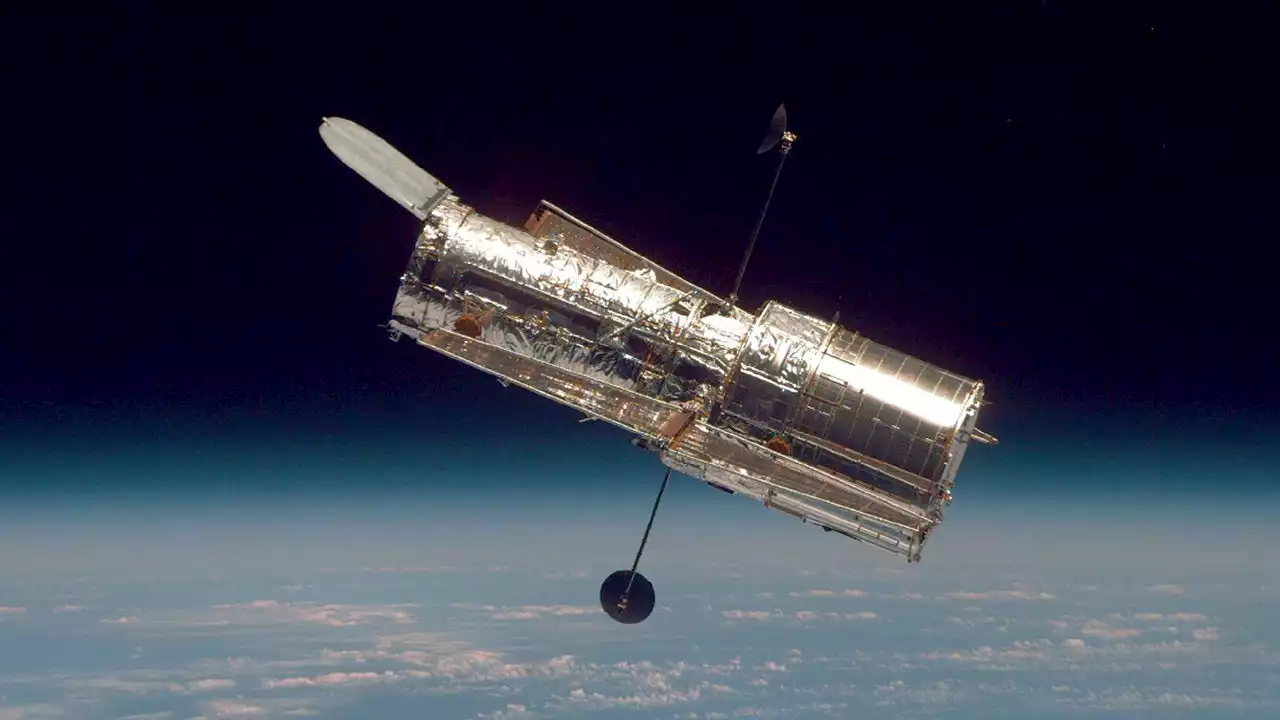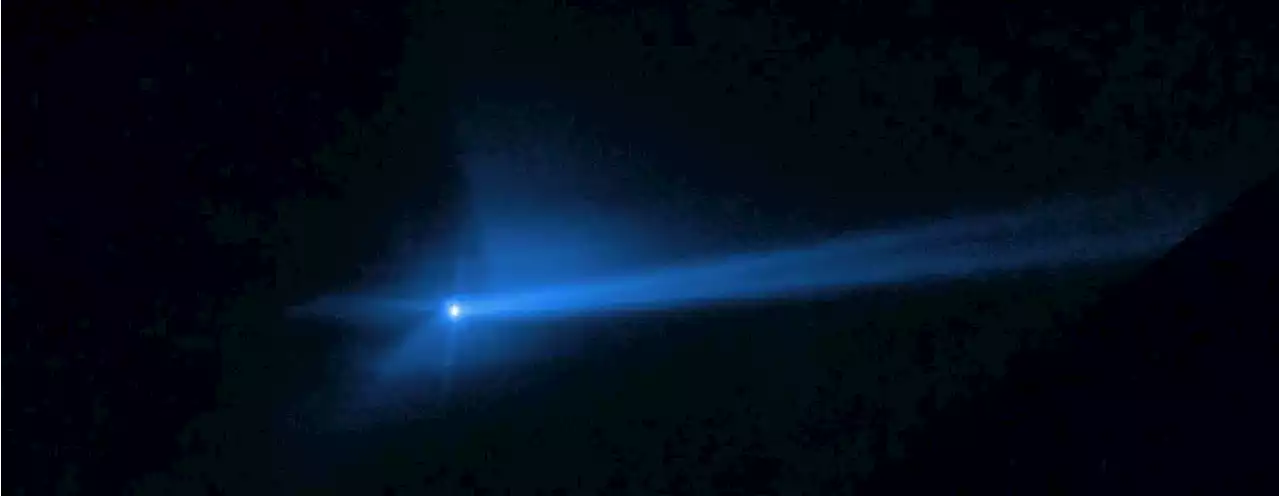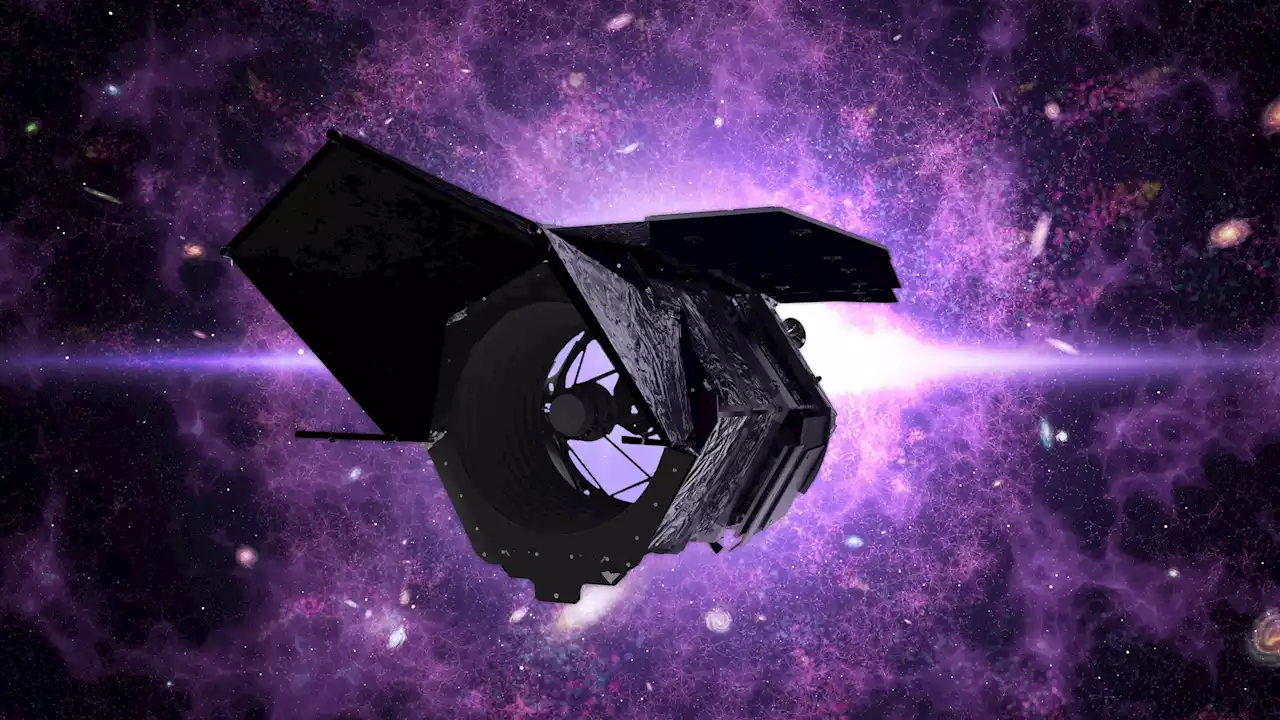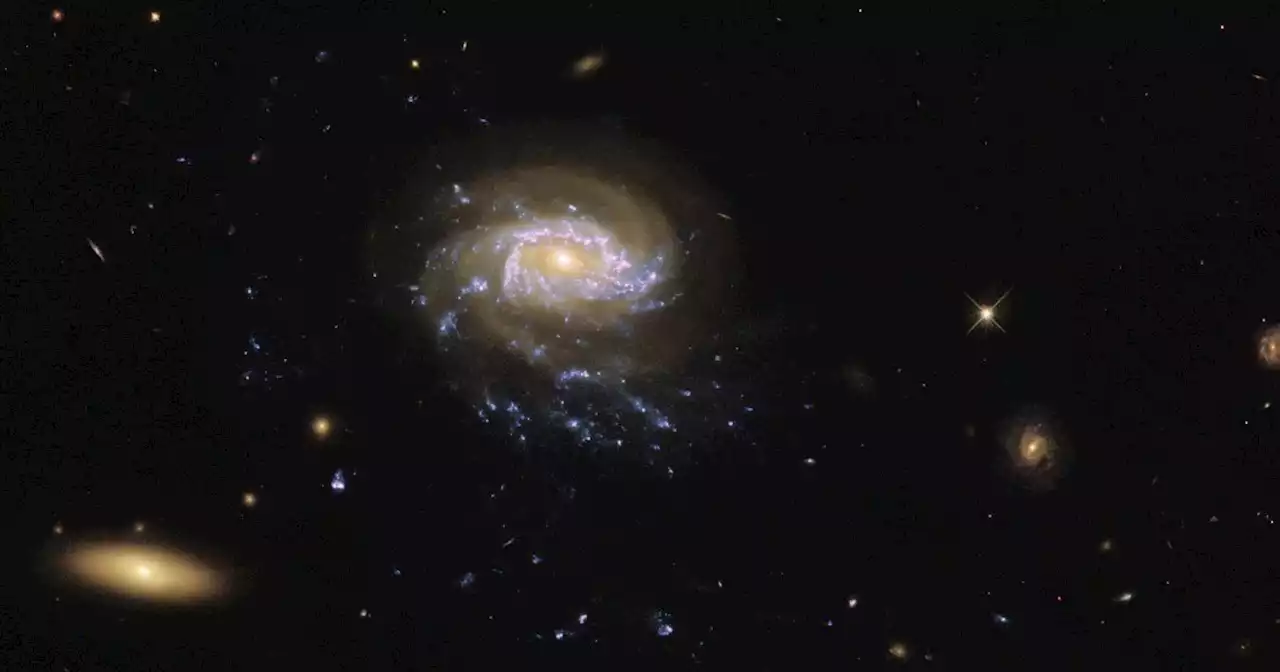This Hubble image shows a jellyfish galaxy, a galaxy type named for its larger main body with tendrils that float along after it like the sea creature.
This week’s image from the Hubble Space Telescope shows a special and delightful cosmic object: a jellyfish galaxy. These galaxies are named for their larger main body with tendrils that float along after them, like the sea creatures.
Jellyfish galaxies are formed due to an effect called ram-pressure stripping, in which the gravity of other nearby objects like galaxies or galaxy clusters acts like a headwind, moving dust and gas from the galaxy and stripping it in some regions. This process can slow star formation in the galaxy as there is no longer enough dust or gas available to form new stars, and can even cause the eventual death of the galaxy in question.
México Últimas Noticias, México Titulares
Similar News:También puedes leer noticias similares a ésta que hemos recopilado de otras fuentes de noticias.
 Watch: New video from Hubble space telescope captures asteroid-smashing debris from successful DART missionThe Double Asteroid Redirection Test (DART) mission involved slamming a 1,200-pound spacecraft about the size of a vending machine into an asteroid at 13,000 miles per hour.
Watch: New video from Hubble space telescope captures asteroid-smashing debris from successful DART missionThe Double Asteroid Redirection Test (DART) mission involved slamming a 1,200-pound spacecraft about the size of a vending machine into an asteroid at 13,000 miles per hour.
Leer más »
 Hubble Space Telescope Captures Movie of DART Asteroid Impact DebrisThis movie captures the breakup of the asteroid Dimorphos when it was deliberately hit by NASA’s 545-kilogram Double Asteroid Redirection Test (DART) mission spacecraft on 26 September 2022. The NASA/ESA Hubble Space Telescope had a ringside view of the space demolition derby. The Hubble movie st
Hubble Space Telescope Captures Movie of DART Asteroid Impact DebrisThis movie captures the breakup of the asteroid Dimorphos when it was deliberately hit by NASA’s 545-kilogram Double Asteroid Redirection Test (DART) mission spacecraft on 26 September 2022. The NASA/ESA Hubble Space Telescope had a ringside view of the space demolition derby. The Hubble movie st
Leer más »
 Turning Back the Cosmic Clock: How NASA’s Roman Space Telescope Will Rewind the UniverseA new simulation shows how NASA’s Nancy Grace Roman Space Telescope will turn back the cosmic clock, unveiling the evolving universe in ways that have never been possible before when it launches by May 2027. With its ability to rapidly image enormous swaths of space, Roman will help us understand ho
Turning Back the Cosmic Clock: How NASA’s Roman Space Telescope Will Rewind the UniverseA new simulation shows how NASA’s Nancy Grace Roman Space Telescope will turn back the cosmic clock, unveiling the evolving universe in ways that have never been possible before when it launches by May 2027. With its ability to rapidly image enormous swaths of space, Roman will help us understand ho
Leer más »
 NASA’s Roman Space Telescope Will Unveil Echoes of the Universe’s CreationNASA’s Nancy Grace Roman Space Telescope will detect vestiges of sound waves that once rippled through the primordial cosmic sea. According to new simulations, Roman’s observations could extend these measurements into an unprobed epoch between the universe’s infancy and the present day. Studying the
NASA’s Roman Space Telescope Will Unveil Echoes of the Universe’s CreationNASA’s Nancy Grace Roman Space Telescope will detect vestiges of sound waves that once rippled through the primordial cosmic sea. According to new simulations, Roman’s observations could extend these measurements into an unprobed epoch between the universe’s infancy and the present day. Studying the
Leer más »
 7 things you didn’t know about the James Webb Space TelescopeThink you know everything about the James Webb Space Telescope? Think again. Here are seven secrets you might not know about Webb.
7 things you didn’t know about the James Webb Space TelescopeThink you know everything about the James Webb Space Telescope? Think again. Here are seven secrets you might not know about Webb.
Leer más »
 Roman will survey the sky 1,000 times faster than Hubble | Digital TrendsThe Nancy Grace Roman Space Telescope, set to launch in 2027, will look at vast areas of space to help cosmologists understand the universe on a large scale.
Roman will survey the sky 1,000 times faster than Hubble | Digital TrendsThe Nancy Grace Roman Space Telescope, set to launch in 2027, will look at vast areas of space to help cosmologists understand the universe on a large scale.
Leer más »
